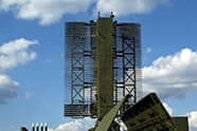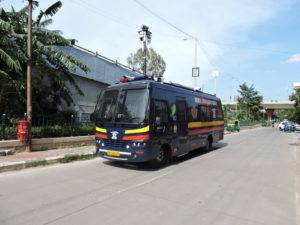Introduction
A video surveillance system targets one of two objectives: to act as a deterrent to a potential breaking of the law of the land, failing which it seeks to capture evidence of such activity; or to act as an observer, instead of a human resource, whether for monitoring or intelligence-gathering purposes.
In the case of the former objective, it does not matter whether the camera is visible to persons within the surveillance target area; in fact, in many cases, the user will ensure that the camera is visible. In the case of the latter objective, the effectiveness of the surveillance operation lies in its discretion. Camouflaging video surveillance is easier indoors than outdoors, and is easier for permanent fixtures than for temporary surveillance operations. This brief looks at hardware choices that will allow easier camouflaging of outdoor video surveillance.
Camouflaged Hardware
There is a handful of features that are critical to camouflaging video surveillance sensors outdoors; especially for temporary operations, where the objective is more often observation than deterrence:
Wiring
Wires are a dead giveaway that there is a surveillance device in the vicinity. In indoor and permanent-outdoor installations, power and sensor-data transmission cables are concealed; behind façades or in subterranean trenches respectively. In the case of temporary-outdoor installations, the solution is to go wireless.
Wireless power
The video surveillance camera should not be dependent on power which would require a power socket close by and a power cable leading from the socket to the camera. The options are battery-power or renewable energy (RE).
An earlier Tech. Brief – September 2009, Power Options for IP Surveillance Solution – covered this subject matter. However, since then, the battery-power option has seen the introduction of Li-ion and Li-polymer technology at competitive prices. Today, it is not very expensive to fabricate a Li-ion/Li-polymer battery pack with the ability to power a camera for up to 12 hours; in a compact form-factor. The battery-pack will typically be fitted inside the camera
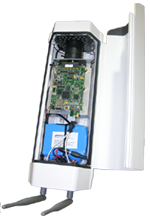 |
| Camera Battery Pack |
housing, keeping it safe from the elements. An external power connector allows the battery-pack to be charged when the surveillance operation is over. The video surveillance camera will have to support sufficient space in its housing to seat such a battery-pack.
For operations that extend much beyond 12 hours, the camera housing will need to be modified to fit the larger size of the battery-pack, or power can be supplied through a combination of RE and Li-ion/Li-polymer technology.
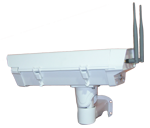 |
| Wireless Antenna |
Camouflage
There are two aspects to camouflage, in connection with ensuring that the video surveillance camera is not visible.
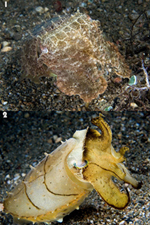 |
| Source: wikipedia.org |
Camouflaged enclosures
There are camera enclosures/fittings available, inside which the camera can be placed, which will render the camera hard to detect in specific settings. Such enclosures/fittings have tradtionally been used in the retail industry, to prevent shoplifting or to covertly track consumer decisions. In the case of outdoor settings, such enclosures/fittings have to be custom-built, and may be of utility only in limited settings.
A more sophisticated approach is to use some form of active camouflage technology, for the device. Active camouflage refers to a technique that allows an object to blend with its surroundings, through mimicry; and, additionally, change the object’s camouflage as the suroundings change. Borrowed from the animal world (think: cuttlefish, chaemeleon), active camouflage is seeing increased use, especially through optical illusion, thanks to technologies such as OLED (Organic LED). However, such implementations are currently extremely expensive, and not widely available commercially.
 Camouflaged operation
Camouflaged operation
In order to escape detection, the video surveillance camera needs to be fixed. In addition, LEDs indicating the operaional state of the device (power on, transmitting, etc.) should not be visible to passers-by. Finally, in the case of low-light or no-light operation, the device should employ a passive illumination technology (thermal imager) rather than an active illumination technology (IR-Illumiator). Please refer the January 2010 Tech. Brief – Low-Light and No-Light Surveillance – for a summary of active and passive illumination technologies.
Remote Operation
The two points to note with respect to remote operation are the ability to operate the video surveillance camera remotely and the ability to track the camera.
Conclusion
Planning an outdoor surveillance operation is more than just planning the placement of video surveillance cameras. Depending on the objective of the exercise, sufficient time and care should be taken to address the issue of camouflaging the surveillance devices.
Mistral offers its range of battery-operated, wireless IP surveillance cameras for outdoor surveillance applications. Based on the need, custom-built camouflaging features can also be offered on these cameras.

